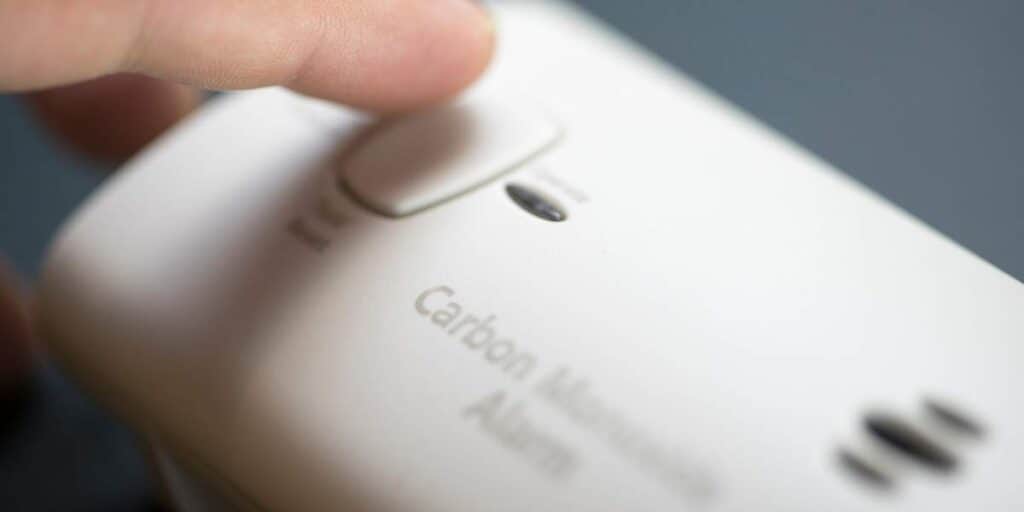Carbon monoxide detectors are essential for keeping your family safe from the dangers of this odorless, colorless gas.
But did you know that the location of your carbon monoxide detector is just as important as having one in the first place?
Carbon Monoxide Detector Placement For Furnace
In general, though, it’s recommended that a carbon monoxide detector be located at least 20 feet away from any fuel-burning appliance like furnaces or water heaters.
The ideal distance between a furnace and its associated carbon monoxide detector depends on several factors, such as the type of furnace used and whether there have been any modifications.
This will help ensure that levels of dangerous gases don’t reach dangerous levels before the device can detect them.
Importance of Carbon Monoxide Detector When Using a Furnace
It is incredibly important to have a carbon monoxide detector installed when using a furnace, as this gas can be highly dangerous in enclosed spaces and with prolonged exposure.
Carbon monoxide is an odorless and colorless gas produced as a by-product of combustion processes like those used in furnaces.
Without some warning system, people can be exposed to hazardous gas levels without knowing it.

A carbon monoxide detector is a simple and effective way to detect the gas in its early stages and take action before anyone in the household becomes ill or worse.
What is Carbon Monoxide?
Carbon monoxide (CO) is an odorless, colorless, and deadly gas produced when fuel is burned.
It is a by-product of combustion processes such as those used in cars, furnaces, water heaters, grills, and other appliances powered by natural gas, oil, or wood.
In certain conditions, CO can be produced in concentrations that can lead to illness. Installing a carbon monoxide detector in your home is important to ensure your and your family’s safety.
How is carbon monoxide produced in a furnace?
Carbon monoxide is produced in a furnace when fuel such as natural gas, oil, or wood is burned inefficiently.
This can happen if the fuel fails to fully combust due to inadequate ventilation or oxygen, releasing carbon monoxide into the air.

For this process to be safe and efficient, furnaces must be maintained regularly and free from blockages that prevent proper combustion.
All rooms containing a furnace should also have a functioning carbon monoxide detector installed to alert occupants of hazardous gas levels in their environment.
Risks Associated With Carbon Monoxide From Furnace
The risks associated with carbon monoxide from a furnace are numerous and potentially deadly.
Carbon monoxide is a by-product of combustion that can quickly build up in enclosed environments, such as your home.
It is an odorless, colorless gas that cannot be detected without specialized equipment, like a carbon monoxide detector.
Inhaling high concentrations of CO can lead to headaches, nausea, and dizziness. Therefore, it is important to have a functioning carbon monoxide detector installed in any room containing a furnace to detect the gas before it becomes dangerous.
Types of Carbon Monoxide Detectors
Two main types of carbon monoxide detectors are available: battery-powered and plug-in models.
Battery-powered models are the most affordable and easiest to install as they require no wiring or additional power source.
These devices detect levels of carbon monoxide in the home and sound an alarm if dangerous levels are detected.
Plug-in models require a power outlet, but they offer more advanced features, such as digital displays and remote monitoring of carbon monoxide levels. Whichever type of detector is chosen must be regularly tested to ensure it functions properly.
How do Carbon Monoxide Detectors Work?
Carbon monoxide detectors use a variety of technologies to monitor the levels of CO in the air. The most common type of detector uses an electrochemical cell sensor that detects carbon monoxide molecules when they react with the electrolyte inside the cell.
This type of detector is known to be highly accurate, as it will sound an alarm when gas levels reach a certain threshold.
Other detectors use photo-ionization or infrared technologies to detect CO molecules in the air. Still, these must be more accurate and may be prone to false alarms.
Factors to Consider When Determining the Placement of Your Carbon Monoxide Detector for Furnace
Location: Carbon monoxide can build up in different parts of the home, so it is important to place detectors near any potential sources of CO, such as furnaces and other fuel-burning appliances.
Height: It is best to install detectors at least 5 feet off the ground or higher to ensure they can detect carbon monoxide before it reaches dangerous levels for inhabitants.
Spaces between units: To maximize protection from carbon monoxide leaks, ensure at least 10ft between each detector unit installed in a single room or area.
Number of Units: The number of detectors needed depends on the size and layout of your home; larger homes may require more than one detector per space or floor level to provide sufficient coverage throughout the building.
Battery life: Make sure you check battery life regularly and replace any batteries if necessary – this will ensure that your detector remains operational even when power cuts occur due to storms or other issues with electricity supply lines.
Do I Hire a Professional to Install a Carbon Monoxide Detector?
Installing a carbon monoxide detector can be done by yourself, but hiring a professional is highly recommended to ensure it is installed correctly.
Professional installers will have the knowledge and experience to determine the best location for the detector and ensure it is connected properly.
They will also be able to test the unit and ensure it functions correctly before leaving the job. This will give you peace of mind, knowing that your detector is working properly and that you and your family are protected from carbon monoxide leaks in your home.